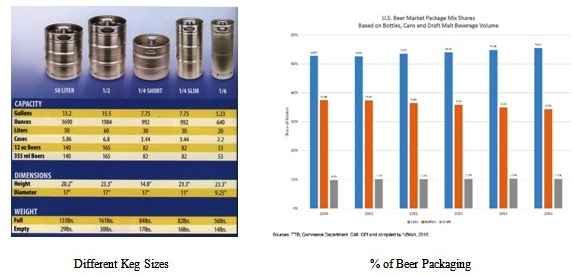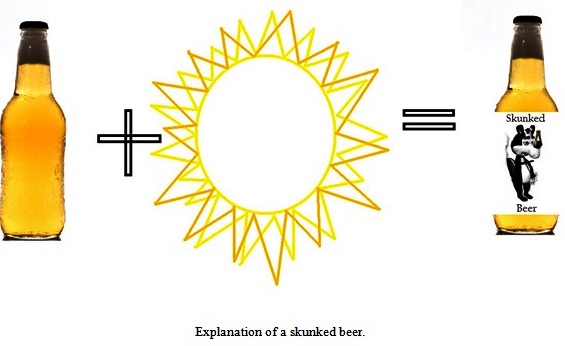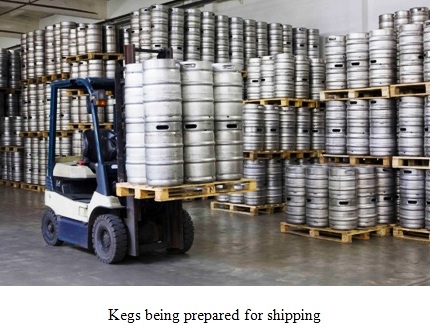Brief History of Beer
Beer has been around for a very long time. Tests have shown that beer has been dated back to 7,000 years ago! It’s safe to say beer has been very popular throughout the ages. When beer was first made it was made in jars and made at home. It wasn’t until the 14th and 15th when beer started to be brewed into larger quantities. There were many factors that contributed to progressive change and revolutionized the production of beer.
Many of these factors were because the technology was advancing, and more machines being made rather than people making it. This eventually led to more and more people wanting it and becoming more familiar with it. A lot of these events happened in Europe and became a very important market to countries like Germany. Even now today the oldest running brewery is in Germany and is almost 1,000 years old!
Shipping and packaging of beer changed just as much as the evolution of beer itself. The beer industry became one of the biggest industries recognized all over the world and not just in Europe which made shipping and packaging very interesting.

Packaging Beer
The packaging of beer begins right after it is made. The process of brewing is in huge metal-like kettle containers and must sit and ferment for seven to ten days. Once this process is over the beer is transferred to kegs, cast, or bottles. The packaging varies on many different aspects and preferences. Beer started being packaged in stoneware containers because not all places could afford glass. Barrels and stoneware were the early common ways of packaging beer. Both were inconvenient and heavy. As time passed, innovations in the late 1800’s allowed beer to be packaged in glass which lead to mass production of glass bottles.
Beer cans, now seen everywhere, wasn’t even produced until the end of Prohibition in the United States. The American Can Company knew that cans would benefit brewers because cans are easier to ship and more cost efferent than bottles. Packaging beer was difficult to do when most were just using bottles and barrels because once packaged it became harder to transport and ship.
In today’s world beer is still packaged in cans, bottles, and kegs. These all give the consumer and company options to use and think about when brewing beer. Factors like price and preference is what leads the brewing companies packaging options. Today more and more kegs are being used because they can be reused and hold more beer than the bottles or the cans can hold.

Traveling Beer (Distributing)
Once the beer is made and packaged it must now learn to travel. Beer cannot deliver itself, so companies must ship it to its desired consumer. Beer can be shipped anywhere from the next-door neighbor or all the way across the world. Most likely the beer will be shipped differently than when it was packaged. This means that once the bottles or cans are made they will be put with others like them to make pack, which is part of packaging. The tricky part comes next. Beer is packaged in different ways leading to the way it is transported different every time. Glass bottles are more fragile and can break much easier than the rest. Bottles can be packaged in different ways. One way is using cardboard boxes and having dividers in between each bottle to absorb shock and energy and to cushion the glass preventing it from shattering. Another way is to individually wrap the bottles in bubble wrap or other cushion like substances then putting it into a box. Many use the first method because once arrived to the desired destination then the beer can be pulled straight out ready to sell or drink. Cans are much easier to ship and take up less space. Cans are normally divided up into 6, 12, 18, 24, and sometimes 30 packs. Once the cans are divided up and packaged into its perspective boxes then the cases can be stacked together on pallets. After stacking them and getting the desired inventory it can be wrapped up like a present, so it does not slide around or fall while being shipped. Kegs being shipped are the easiest but also the heaviest. Kegs can be stacked on themselves and tied down to whatever it is being shipped too.

Precautions
Shipping beer takes many precautions and has many factors to consider other than the beer just breaking. The beer itself is also very fragile and in certain conditions and circumstances can ruin or go bad. Light and oxygen are the two main components of what makes a beer ruin. Therefore, when shipping and handling beer one must be aware of where it is going and how it gets there.
Beer can also change the way it tastes if it is not stored correctly or if it is not taken care of. Once a beer is at a certain temperature the beer should stay at a similar temperature and not a higher temperature. If a beer becomes too hot it can change the way the beer taste. It still is okay for one to drink but it might not have the flavor the customer is expecting and could be confused as a skunked beer. Delivering beer over long periods of time can also tamper with the quality of the beer.
Beer can still be tampered with in other ways. Since a beer is carbonated if it is shaken too much it could affect the way it tastes or even if there is enough pressure built up it could potentially bust. When shipping, not only does the company have to worry about breaking or ruining the flavor but also could go flat and not have the amount of foam or taste when opening a beer after being shipped.

Conclusion
Beer has been around before most things and beer is still finding a way to grow and get bigger. Many different factors contributed to where the beer industry is at now. In the last few years the beer industry has been looking at more and more ways of packaging and shipping beer because the demand is high and places all over are wanting certain brews of beer. One of the new methods of packaging beer is the more common practice of using kegs which made shipping easier and can be reused once cleaned as opposed to be thrown away.
The beer industry will continue to find more efficient ways to ship and package the beer that is being made. The more and more technology that comes out helps push forward ways that could help and encourage more involvement into what goes on after the beer has been brewed.
References
https://en.wikipedia.org/wiki/History_of_beer/
http://www.thebeerstore.ca/beer-101/brewing-process
http://www.beerinstitute.org/trends-beer-packaging/
https://www.probrewer.com/library/packaging/


































